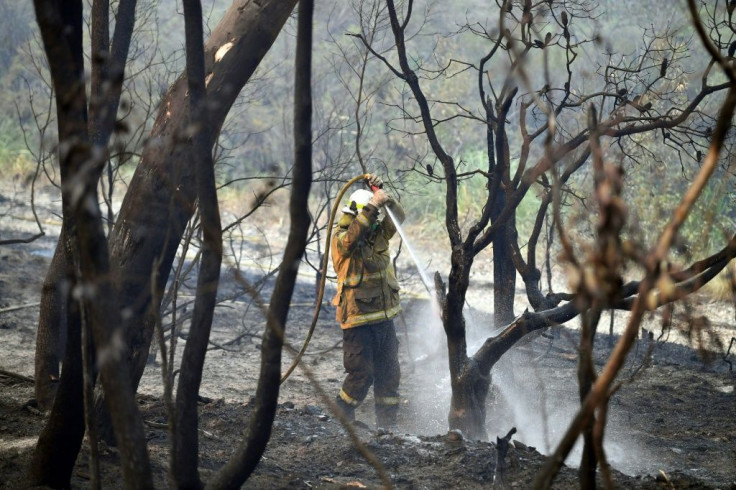Australia Wildfire: NSW Declares 2nd State Of Emergency Due To Record-Breaking Heat Wave
KEY POINTS
- New South Wales declared its second state of emergency as fires continue to burn across Australia for weeks
- The hottest December temperature this fire season broke the previous records with the national average temperature reaching 41.9 degrees Celsius on Thursday and the hottest temperature was recorded in the West Australian town, Eucla, reaching 49.8 degrees Celsius
- The record-breaking heat waves and the strong, dry winds aggravated the already burning fires with 97 fires burning across the country and 50 were still uncontained
- Some bushfires combined to form a "mega-blaze" in northern Sydney
- Six deaths were recorded and 800 homes have been destroyed
New South Wales officials declare a second state of emergency on Thursday after a record-breaking heatwave aggravated fires across the area.
Around 100 fires were reported to be burning around the city and half of them were uncontained and with bushfires combining to form a "mega-blaze" north of Sydney, New South Wales, once again declared a seven-day state of emergency.
A State of Emergency is declared in NSW from today giving Commissioner Fitzsimmons additional powers to deal with the bushfires. Severe weather conditions are forecast for today and will worsen on Saturday. Listen to warnings and be prepared. #NSWfires pic.twitter.com/iIqfFpIQIW
— Gladys Berejiklian (@GladysB) December 18, 2019
A statewide fire ban was also established until midnight on Saturday.
Al Jazeera reported NSW Premier Gladys Berejiklian saying that the state of emergency was due to the "catastrophic weather conditions".
"The biggest concern over the next few days is the unpredictability, with extreme wind conditions, extremely hot temperatures," Berejiklian said.
According to the Bureau of Meteorology, Australia broke the record of having the hottest day ever for a second straight day with a 41.9 degrees Celsius (107.4 degrees Fahrenheit) national average on Thursday which topped Tuesday's 40.9 degrees Celsius (105.62 degrees Fahrenheit) average.
The heatwave also saw the hottest December temperature in the country on Thursday when West Australian town, Eucla reached 49.8 degrees Celsius (121.6 degrees Fahrenheit) which broke the previous record for the highest December temperature in Australia which was 49.5 degrees Celsius (121.1 degrees Fahrenheit) in Birdsville, Queensland back in 1972.
The average maximum temperature was 105.6 Fahrenheit, topping the previous 2013 record of 104.5 Fahrenheit https://t.co/J0iB6v9QrF
— CNN (@CNN) December 18, 2019
Putting out the fires have proven to be especially difficult on Thursday with 97 fires burning nationwide, 50 of which are uncontained, and 1,700 firefighters battling the flames exacerbated by the strong, dry winds and the high heat.
Teams from the United States and Canada, as well as the Australia Defense Force were assisting the firefighters and were divided into five 100-person "strike teams" which are on standy should any incident arise.
New South Wales Rural Fire Service Commissioner Shane Fitzsimmons said, "The worst of the fire weather conditions, the extreme fire danger ratings we are expecting today, are centred around the greater Sydney environment."
The fires were also causing a "public health emergency"as doctors express their concern on the smoke haze and the extreme weather conditions' effect on the people's health.
CNN reported a total of six deaths and 800 homes destroyed during this season.
The first state of emergency declared during the fire season was on November 11.

© Copyright IBTimes 2024. All rights reserved.





















